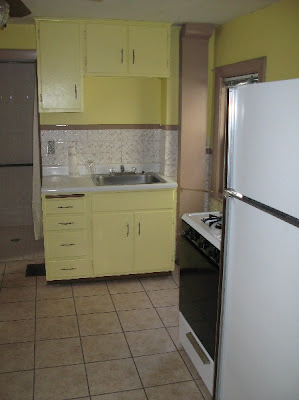
Is your unit vacant for multiple months? There are many factors that may contribute to the vacancy of your unit. While some of them, such as location, surroundings, size and timing, you have no control over. There are some steps you can do to reduce the number of days, or even months of your vacancy! Filling a vacancy should be one of your top priorities, because every month your unit is vacant, you are losing hundreds or even thousands of dollars in revenue!
Timing
The winter season is generally slower for rentals; this could be due to the holiday season and the cold. Statistics show that more tenants move out during the spring and summer time. If your property is near a university, students often look for housing in spring and fall.
As a landlord, you want a good tenant with good credit reports and a good job. Good tenants also have more options too. Keeping that in mind, here are some steps that can increase the number of prospective tenants considering your unit.
Repairs and Maintenance
This is the time to repair and maintain the property. It is a lot more effective fixing up an empty unit so you won’t inconvenience an existing tenant. Check all the plumbing and piping. Repaint your walls, fix lighting and replace carpets. Update any outdated appliances.
Pricing
Figure out the fair market price of your unit and price your rent slightly below market price. It doesn’t have to be a lot, you can start off with $10-25 less than the fair market value. This can help you attract more prospective tenants to view your property. To figure out the fair market price, you will need to gather information on the area where your unit is located. Or you can request a free consultation with one of our representatives. E-mail: leasing@aptcorner.com
Incentives
You can offer discounts such as 1 or 2 months off if a prospective renter signs and follows with a one or two-year lease. This can reduce the amount of time and loss revenue when a tenant moves out after a year.
Restrictions
Please bear in mind that the higher numbers of restrictions you have, the less applicants your place will attract. Consider allowing section 8 or pets. There is more paperwork for section 8 but it also guarantees rent and often has a lower turnover.
Show the property
Show it often and as soon as possible, make yourself or someone else available and be sure to show it in its best condition. Clean the unit before you show it.
Empty or Lived in.
Depending on your current tenant, it may be better to show the unit empty. However, if your current tenant has a good sense of style, existing furniture and décor may actually enhance the showing and help prospective renters visualize the space better. However, you would need to give your tenant 24-hour notice before showing the unit.
Handling applications
Once you receive applications, check them fast! Some renters may be under a time constraint and may pick the unit that responds the quickest. Be sure to follow up with every one of your applicants and schedule a lease signing as soon as possible before they choose to view more apartments and back out.
Lack of amenities
These are common deal-breakers that prospective tenants are looking for when they are searching for a new place. While some may not be possible to change, if you can improve the situation, definitely look into it.
- Washing machine and dryers on site, or hook ups – this is easily a deal breaker.
- Parking – create an extra parking space by allowing tandem parking or utilizing the driveway if it does not block anyone.
- Dishwasher – Used ones cost less than $300, New approximately $700 + installation fees.
- Fridge – cheap, you can even buy one on craigslist for $100-300.
- Air conditioner – a window air conditioner is an additional $200-300. Installation is also easy.
- Heater/central heating
- Wheelchair accessibility – If you only have a low staircase, adding a ramp will make your apartment wheelchair assessable.
Hiring a leasing specialist
Expenses on advertising will often more than offset the cost of lost rent for one or more months. As a residential leasing specialist, Apartment Corner only charges when we fill your unit. We are so confident in our performance that both our full-service and lead-generation leasing packages are completely free if you are able to fill your unit before we do. Since your vacancy is our focus, not only do we market your vacant unit to a wider audience, but we are also available 7 days a week, 10am-5pm, to answer calls and show units to tenants. This is why we often operate more efficiently than a larger property manager. When you opt for our services, you do not have to worry about your vacancy and it is safe in our hands. You also have the choice to screen and accept a prospective tenant and rest assured, a quality tenant would sign your lease.











Recent Comments